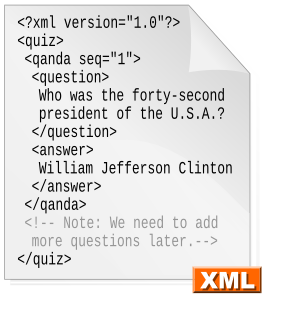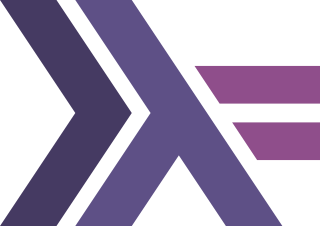
The Document Object Model (DOM) is a cross-platform and language-independent application programming interface that treats an HTML, XHTML, or XML document as a tree structure wherein each node is an object representing a part of the document. The DOM represents a document with a logical tree. Each branch of the tree ends in a node, and each node contains objects. DOM methods allow programmatic access to the tree; with them one can change the structure, style or content of a document. Nodes can have event handlers attached to them. Once an event is triggered, the event handlers get executed.

Martin Fowler is a British software developer, author and international public speaker on software development, specialising in object-oriented analysis and design, UML, patterns, and agile software development methodologies, including extreme programming.
XSLT is a language for transforming XML documents into other XML documents, or other formats such as HTML for web pages, plain text or XSL Formatting Objects, which may subsequently be converted to other formats, such as PDF, PostScript and PNG. XSLT 1.0 is widely supported in modern web browsers.
Cocoa is Apple's native object-oriented application programming interface (API) for its desktop operating system macOS.
In software engineering, a software design pattern is a general, reusable solution to a commonly occurring problem within a given context in software design. It is not a finished design that can be transformed directly into source or machine code. It is a description or template for how to solve a problem that can be used in many different situations. Design patterns are formalized best practices that the programmer can use to solve common problems when designing an application or system.
AspectJ is an aspect-oriented programming (AOP) extension created at PARC for the Java programming language. It is available in Eclipse Foundation open-source projects, both stand-alone and integrated into Eclipse. AspectJ has become a widely used de facto standard for AOP by emphasizing simplicity and usability for end users. It uses Java-like syntax, and included IDE integrations for displaying crosscutting structure since its initial public release in 2001.

Apache Struts 1 is an open-source web application framework for developing Java EE web applications. It uses and extends the Java Servlet API to encourage developers to adopt a model–view–controller (MVC) architecture. It was originally created by Craig McClanahan and donated to the Apache Foundation in May 2000. Formerly located under the Apache Jakarta Project and known as Jakarta Struts, it became a top-level Apache project in 2005.
XInclude is a generic mechanism for merging XML documents, by writing inclusion tags in the "main" document to automatically include other documents or parts thereof. The resulting document becomes a single composite XML Information Set. The XInclude mechanism can be used to incorporate content from either XML files or non-XML text files.
Robert M. Love is an American author, speaker, Google engineer, and open source software developer.
David Megginson is a Canadian computer software consultant and developer, specializing in open-source software development and application. He was the lead developer and original maintainer of the Simple API for XML, or SAX, a leading streaming API for XML.
Hibernate ORM is an object-relational mapping tool for the Java programming language. It provides a framework for mapping an object-oriented domain model to a relational database. Hibernate handles object-relational impedance mismatch problems by replacing direct, persistent database accesses with high-level object handling functions.

Apache Geronimo is an open source application server developed by the Apache Software Foundation and distributed under the Apache license.
Streaming API for XML (StAX) is an application programming interface (API) to read and write XML documents, originating from the Java programming language community.
Shelley Powers is an American author, web developer and technology architect. She works with and writes about open source, LAMP technologies and web service development, CSS/XHTML design, web graphics and the use of these technologies in the semantic web.

Michael James Fitzgerald is an American writer. He is the author of more than 20 books, and is best known for his technical books.
Xerlin is an open source XML editor for the Java 2 platform released under an Apache style license. The project is a Java based XML modeling application written to make creating and editing XML files easier. The latest version of Xerlin is 1.3, which was released in May 2005.
XQuery is a query and functional programming language that queries and transforms collections of structured and unstructured data, usually in the form of XML, text and with vendor-specific extensions for other data formats. The language is developed by the XML Query working group of the W3C. The work is closely coordinated with the development of XSLT by the XSL Working Group; the two groups share responsibility for XPath, which is a subset of XQuery.
XOM is a XML document object model for processing XML with Java that strives for correctness and simplicity.
A Processing Instruction (PI) is an SGML and XML node type, which may occur anywhere in the document, intended to carry instructions to the application.









